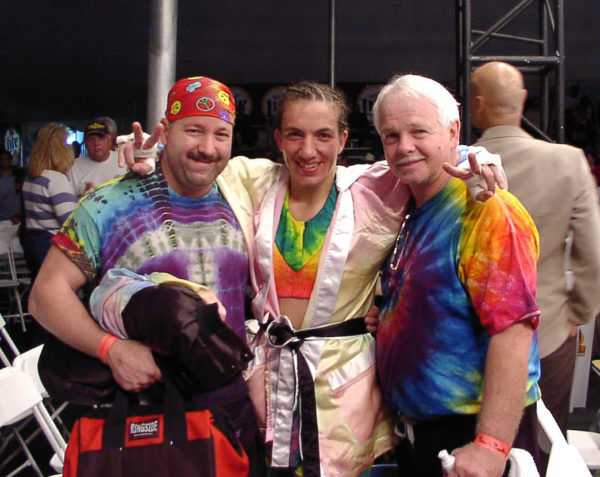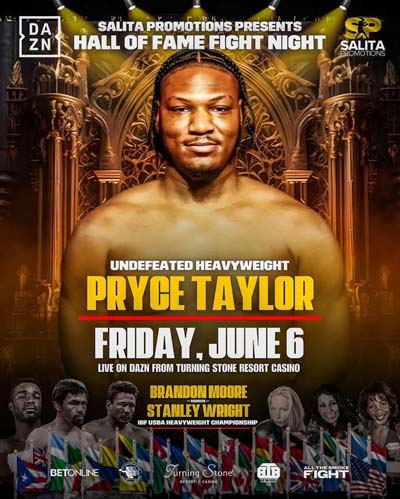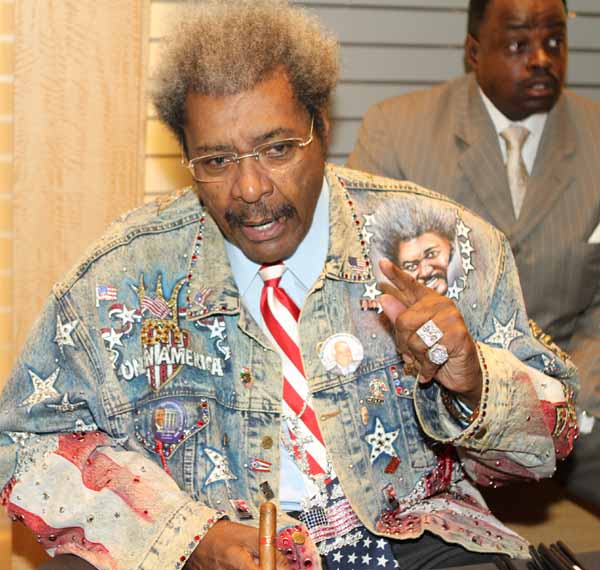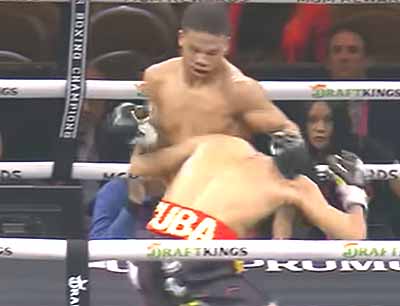
“Chronological events that occurred in women’s boxing..”
While women’s boxing can loosely trace it beginnings to London in the 1720’s, throughout the ensuing decades, there were various exhibitions and scattered bouts until the 1950’s when several fighters, most notably Barbara Buttrick, JoAnn Hagen (Verhaegen), and Phyllis Kugler staged professional fights. The sport rekindled again in the 1970s thanks to the efforts of several important trailblazers. The 1970’s, in particular, were highlighted by many women’s boxing “firsts” including many states lifting bans for women to box; issuing “first time” boxing licenses, sanctioning boxing matches; and the various commissions approving more than four rounds for women’s bouts.The history of women’s boxing has a rich collection of competitive and triumphant spirits.
1720′s
London: First-staged women fights. The women would punch, use their feet and knee lifting/kicking to all parts of their opponents body. They also could maul, scratch and throw. This resulted in serious injury for either or both fighters. In other reports, in London in 1722 at the Boarded House, near what is now Oxford Circus, Elizabeth Wilkinson, the Cockney Championess, defeated Martha Jones.
1876
Susan Cahn in “Coming on strong, gender and equality in 20th century sport” notes a match between Nell Saunders and Rose Harland in 1876 at Hills Theater in NYC. they supposedly fought for a silver butter dish. This was considered the first women’s match in the United States.
1880’s
First regulations applied to the sport of boxing.
1904
Boxing was introduced at the 1904 Olympic Games in St. Louis. Women’s boxing was a displayed event at the third Olympic games.
1920’s
Boxing part of the physical training of young ladies in Boston.
1923
La Mar receives FIRST boxing Licence in New Jersey, more to be posted soon.
1954
Barbara Buttrick, one of the most famous women’s boxers of all-time, became the first female boxer to have her fight broadcast on national television.
January 1975
Chairman Edwin B. Dooley and asked to be granted permission to judge pro fights. A week later, he wrote back and said that he would give her a hearing. SHAIN entered the hearing room on Jan. 6, 1975, and found out the next day that she had an unanimous vote to be a judge. Her first professional fight that she judged on was on the eve of Thanksgiving in 1975. Two years later, Sept. 29, 1977, she was at ringside in Madison Square Garden judging her first World championship bout with Muhammad Ali vs. Earnie Shavers. SHAIN WAS THE FIRST FEMALE JUDGE TO WORK A WORLD HEAVYWEIGHT TITLE BOUT. It was also the first time a woman judge Worked a professional fight at New York’s Madison Square Garden. SHAIN earned a place in the Guinness Book of Sports Records and eventually became the subject of a Trivial Pursuit question. Eva Shain lost her battle with cancer in August of 1999.
1975 -1978 (Boxing Licenses)
In 1975, Caroline Svendsen receives a boxing license in the United States in the state of Nevada, and has a sanctioned boxing match in a scheduled four-rounder in Virginia City, Nevada. In 1976, boxer Pat Pineda s the first woman to be licensed in the California; and in 1978, after an on-going lawsuit in the state of New York, three high-profile women boxers, Cathy “Cat” Davis, Jackie Tonawanda, and Marian “Lady Tyger” Trimiar receive their boxing licenses. There are many women who had received first-time licenses during this period, but these particular historical licensing events initiate a flurry of publicity that in turn encouraged other women to join the sport. (WBAN has found that the first boxing license to be issued was in 1923 to boxer Jeanne La Mar.
1977
Boxing ban lifted after almost 100 years since a professional boxing match had been held in Fayetteville, NC Boxing had been illegal in Cumberland County from 1880 until early in 1977 when the ban on the sport was lifted. November 1977, first female bout, Cathy “Cat” Davis vs. Margie Dunson.
1979 – (Increased Rounds)
Shirley “Zebra Girl” Tucker challenges the state of California to increase the number of rounds women could fight. Tucker was backed by the American Civil Liberties Union, and ultimately was able to force the California Commission to change their regulations which at the time forbade female fighters from fighting more than four rounds.
February 1982
JILL LAFLER, a 19-year-old Lansing Community College student, who wanted to be Michigan’s first female Golden Gloves contestant and had filed a lawsuit to win that chance, dropped her lawsuit. LAFLER had lost an early round of her lawsuit when the U.S. District Judge Wendell Miles ruled against her. Even though LAFLER dropped her lawsuit, it was noted that it had opened up a lot of eyes, and they realized that the (state) agency needed some type of need for governing body regulations on women’s boxing.
April 27, 1987
Former World Women’s Lightweight Marian “Lady Tyger” Trimiar stages a well-publicized month long hunger strike, losing nearly 30 lbs., for the rights of women’s boxing and to advocate better money and conditions for professional female boxers—even though she is protesting for others and not herself. Trimiar and others direct their picketing to the promoters at the time who are putting on televised cards. Trimiar tells the media, “Unless women get more recognition, we will be fighting just as a novelty for the rest of our lives. There will be no future.”
April 16, 1992
After eight-years in court in Massachusetts, Gail Grandchamp of North Adams, Massachusetts wins her battle to fight as in a ruling by a state Superior Court judge who rules it was illegal to deny someone a chance to box based on gender. During her battle to win the right to box as an amateur, she passes the age of 36, the maximum age for amateur fighters. Even though she knew it would not help her as an amateur, Grandchamp continues her successful efforts, and eventually did box professionally for a time.
October 1993
USA Boxing didn’t recognize female boxers until 1993, and only then after losing a landmark court case. USA Boxing’s Board of Governor, after a judge rules in favor of Malloy, passes legislation to implement and support the concept of female boxing. First amateur female bout held in the ellingham, Washington, with Dallas Malloy winning in a split decision. (TL Fox uncovered previous sanctioned amateur fights that actually occurred in Minnesota in 1978 – to set the record straight!)
March 1993
Dallas Malloy, at 16 years old, became the first female to challenge USA Boxing’s bylaw that did not allow women to compete, and sues them in federal court for gender discrimination. Malloy wins her case, which generates both national and international publicity. Malloy and Heather Poyner become the first to fight in the state of Washington in a sanctioned amateur bout. Even though Malloy was determined to pursue boxing, she stopped boxing in the next year, declaring that it was “boring.” (It should be noted that this event has been portrayed in the news media as a “history first” for women boxing in amateurs, but WBAN has actually dated sanctioned amateur boxing for women boxers in Minnesota, in 1978).
June 1993
JO-ANNE V NEWMAN of Aiken County was recognized as the FIRST WOMAN TO REFEREE AN AMATEUR BOXING MATCH AT THE NATIONAL LEVEL JUNIOR OLYMPICS. NEWMAN was the first and only woman referee in South Carolina to hold multiple state offices, including the South Carolina Junior Olympic Chairman, a position that she had been elected to since 1991.
October 1993
USA Boxing adopts rules and regulations implementing women’s amateur boxing into its amateur boxing program.
1995
Daily News Golden Gloves: In 1995, the New York Daily News Golden Gloves tournament includes women in their event for the first time. An amateur female boxer, Dee Hamaguchi, is credited for breaking this barrier, allowing this event to become a breeding ground for future professional world champions. In 1994, Dee had applied to fight in this tournament without revealing that she was a female, mailing in her entry form using the initial “D”, without giving away her gender. Unfortunately Dee did not get her schedule for the physical exam and did not participate.
1996
The four-day amateur tournament in Augusta is a result of USA Boxing reaction to the increase in the number of women boxers. The spurt occurred after a Seattle-area woman’s successful suit against the organization in 1991 for the right to compete. In 1993, women were recognized as members by USA Boxing, and today, membership has grown to 763 registered participants, compared with 340 in late 1996.
March 15, 1996
Christy Martin vs. Deirdre Gogarty: Considered by many to be the birth of modern professional women’s boxing, the two staged a bloody six-round slugfest clearly impressing those ringside and a world wide pay-per-view audience, upstaging Mike Tyson’s easy win over Frank Bruno. A flood of worldwide coverage follows, including weeks later a Sports Illustrated cover story on Martin. Sadly, while Martin could have easily carried the torch for the sport, she makes it perfectly clear through many public comments she is not an advocate for women’s boxing in general, but instead is only in the sport for one person – herself.
November 1996
Amateur Boxing Association of England voted in favor of lifting the 116-year ban against women boxing. Not everyone is in agreement with allowing girls as young as ten to spar in gyms and to take part in competition.
July 1997
USA Boxing’s first ever Women’s National Championships.
February 1998 (Lawsuit in UK)
Landmark lawsuit: Britain Jane “The Fleetwood Assassin” Couch takes the British Boxing Board of Control to task for sex discrimination over their refusal to grant her a license to fight in the UK. Couch who had been denied a boxing license since June 1997, and had to come to the United States in order to box, was relentless in her battle to face the BBC in this denial of her right to box. Couch wins the right to “fight” and in Streatham, UK, on November 25, 1998, stops German Simona Lukic in the second round.
May 18, 1998
The Women Boxing Archive Network (WBAN) a history-first with the coverage of the History of Women’s Boxing on the Net, that became the top website worldwide for Women’s Boxing – created, founded by Sue TL Fox.
October 1999 (Woman vs. Man)
What was billed as the “first” sanctioned bout between a man and a woman takes place in Seattle, Washington. Margaret McGregor faces male boxer Loi Chow in a fight scheduled for four two-minute rounds. This event took on international presence, and brought to the surface many troubling issues in the world of women’s boxing. After all of the hoopla was over, it was determined that the fight would be considered an “exhibition” and therefore was far from being the “first” of mixed matches that have taken place off and on throughout the history of women’s boxing.
October 1999 (Ali)
Muhammad Ali’s Daughter, Laila “She-Bee Stingin” Ali, 21, makes her pro debut at the Turning Stone Casino, in Verona, New York. The news coverage leading up to this bout, and the media attention since she has gotten into the sport has surpassed any of the coverage of any one boxer on the scene in the past, and/or in the present. Her most significant fight — and the sports most significant fight since Martin-Gogarty — comes June 8, 2001, when 8,000 fans and hundreds of media trek to upstate New York, for Ali-Frazier IV, a showdown with Jacqui Frazier, daughter of longtime Ali archrival Joe Frazier. The two silence many critics with their spirited and entertaining eight-round bout, won by Ali. The fight draws more than 100,000 pay-per-view buys, again surprising the experts.
August 2012 – 2012 Summer Olympics in London
Women for the first time are included in the Olympics, three weight classes.
January 11, 2014 – The International Women’s Boxing Hall of Fame is created and founded by Sue TL Fox.
©Copyrighted Page – It is strictly Prohibited from using WBAN’s material without expressed permission.
More on Women’s Boxing



